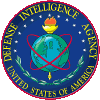

During the 1980s and early 1990s, North Korea developed a complete nuclear fuel cycle that included a plutonium production capability at the Yongbyon Nuclear Research Center. This center, about 90 kilometers north of Pyongyang, comprises facilities to fabricate nuclear fuel, a 5-MW research reactor to produce plutonium, and a reprocessing facility that could extract weapons-grade plutonium from irradiated fuel. Operations of the reprocessing facility, fuel fabrication facility and 5-MW reactor at Yongbyon have been frozen under the Framework (AF).
In addition, North Korea was building a 50-MW reactor at Yongbyon and a 200-MW electric power reactor at Taechon. Construction at these reactors has been halted as part of the Agreed Framework (AF), under which all of these facilities eventually will be dismantled. Under strict terms of the Agreed Framework (AF), North Korea must eventually make its nuclear program completely transparent. In effect, Pyongyang has also obligated itself beyond its Nuclear Nonproliferation Treaty (NPT) and International Atomic Energy Agency requirements by agreeing to eliminate, eventually, all its existing or planned graphite-moderated reactor and related facilities.
In July 1987, North Korea delivered the first (300-km) SCUD Bs to Iran. North Korea also helped establish a SCUD missile assembly/production site in Iran. In late 1990, Iran agreed to buy North Korean (500-km) SCUD Cs as well. Pyongyang could also sell the No Dong missile to both Iran and Libya, but production of this medium-range missile is still stalled.
North Korean military units conduct regular NBC defensive training exercises in preparation for operations in a chemical environment. North Korea has chemical defense units at all levels of its force structure. These units are equipped with decontamination and detection equipment. North Korean military personnel have access to individual protective masks and protective suits.
Since 1990, Pyongyang has placed high priority on military and civilian chemical defense readiness. It has mandated operational training in chemical environments as an integral part of armed forces training and is trying to equip all military forces, including reserves, with full protective gear. In addition, the leadership has required broad segments of the population to engage periodically in simulated chemical warfare drills. Pyongyang has emphasized building and installing collective protection equipment at military production and civilian alternate wartime relocation sites, directing that the entire population be issued protective masks.
Dual-use items, such as spectrum analyzers, computers, oscilloscopes, machine tools, telecommunications equipment, and fiber optics, are being imported. These items purportedly are imported for consumer applications, but many probably are employed in military programs, including those involved with weapons of mass destruction.
